Cleaning your indoor air includes opening windows, dusting, vacuuming, washing. If you do these tasks every week, you will keep your indoor air clean. It also helps to keep mould, dust mites, bacteria, off-gassing and stagnant air from occurring.
You could compare it to brushing your teeth and rinsing your mouth out. If you didn’t brush your teeth and rinse your mouth out every day, you would have cavities, plaque, and that smelly bad breath. You wouldn’t neglect brushing and rinsing, so don’t neglect your indoors.
For all indoor air cleaning, you will need to open all the windows that are wide enough to allow air to reach every part of the room and back out again, no matter which objects stand in the way. I suggest a small fan. When it’s on, it only blows air gently, but you can turn it up to TURBO for those hard to reach areas to move stagnant air along.
Dusting
For dusting, you will need a microfiber cloth. You can choose between a damp cloth or a static duster. I suggest going with the damp cloth because it’s easier to gather the debris you’ve collected from the room. Also, buy a microfiber cloth that is durable — cheap cleaning cloths tend to break down quicker and you’ll be buying cloths all year round.
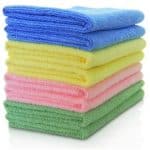 Dusting the surface of your furnishings should be done weekly. This prevents the dust from eventually settling to the depths of your carpet, so it’s best to get rid of it before it settles. It will also leave you less dust and dirt to vacuum.
Dusting the surface of your furnishings should be done weekly. This prevents the dust from eventually settling to the depths of your carpet, so it’s best to get rid of it before it settles. It will also leave you less dust and dirt to vacuum.
Ventilating
This is an important task that most home occupiers neglect. Dust not only lives on the flat surfaces and floor of your space, but also on the walls, behind cupboards, desks, and in dark corners. In fact, mould LOVES growing on dust, walls and in tight, dark spaces.
You should dust the surfaces, cupboards, and corners of your place at least once a week.
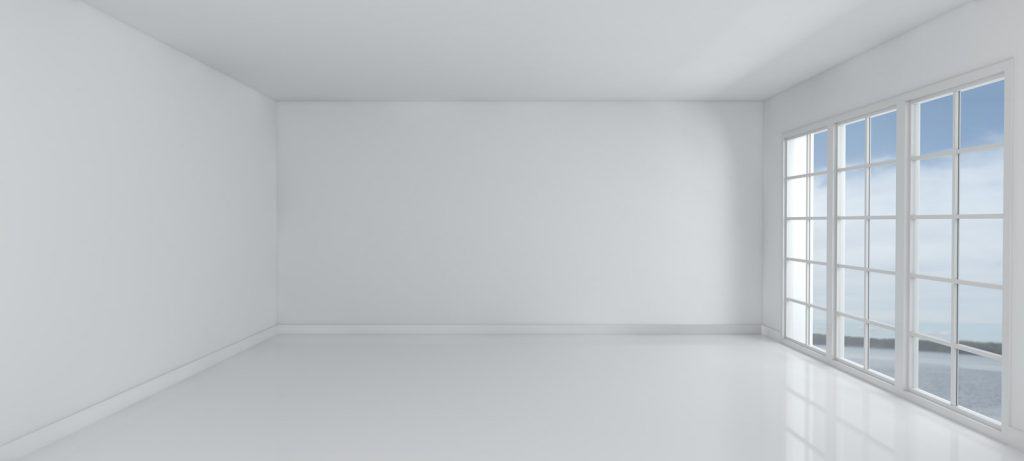
If mould starts to grow in any of these places, ventilating will dry the air and stop the mould growing and make it easier for fermented white vinegar, or alternatively, some types of aromatherapy oils, to kill it.
All you need is your vacuum wand and an attachable vacuum brush. Just like normal vacuuming, it’s wise to move up and down walls, evenly and slowly. Place a micro fibre cloth over the vacuum brush for more ‘grip’.
Vacuuming
 Vacuuming your space can be easy or hard. The easy way would be to hire an expert. This allows you to hire an expert and let them vacuum your entire home whilst you spend your time more productively.
Vacuuming your space can be easy or hard. The easy way would be to hire an expert. This allows you to hire an expert and let them vacuum your entire home whilst you spend your time more productively.
Vacuum cleaners come with three features: suction, power head and HEPA.
Suction
This works by air going into the vacuum cleaner causing low air pressure and drawing up small objects which then get trapped in bags, canisters or filters (which we talk about in a bit). Standard bagged vacuum cleaners are a primary contributor to poor indoor air quality. Typically has a 20-micron air tolerance. They attach inside to your vacuum barrel which draws in air, creating a collection point for all debris. I don’t recommend this type of cleaner because it requires your bag to “capture” all debris. Worst case scenario is your vacuum sucks up microscopic particles that flow right through the vacuum cleaner bag than it actually picks up – this is no good!
Power Head
They are separate motorised units that operate the brush which agitates the surface and the loosened debris is sucked up into the wand, hose and bag. This is as easy as it gets – removes dirt from carpets. Whereas a turbo head is less effective which uses airflow to operate the brush. Robotic cleaners cost more than the other cleaners (their plastic bristles pick up large pieces of dirt and leave the medium to finer dust behind so you are constantly cleaning to keep up with the demand) and it will cost more to repair as stockists don’t carry spare brushes beyond 5 years, you’ll need to buy a whole new cleaner.
HEPA Filter
These work with the help of the air coming FROM your vacuumed surfaces. The filter attaches to inside your vacuum and uses the suction, to capture smaller particulates into a bag. When your space is cleaned, you just have to empty the bag. Yes, every time you vacuum, you empty the bag.
Both bagless and bagged cleaners require a filter system. Remember the debris you’ve just sucked up is both alive and dead, dust, bacteria, mould spores, pet hair, not to mention minute particles of chemicals and pollutants walked inside the building from the street. However, that’s not the case for my favourite type of cleaner: the microfiber cleaner.
HOW TO
How to HEPA?
If you don’t have a good vacuum cleaner with a HEPA filter, or having air quality issues, you need to learn how to vacuum a room professionally.
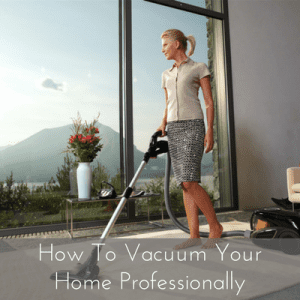
D-I-Y Vacuuming
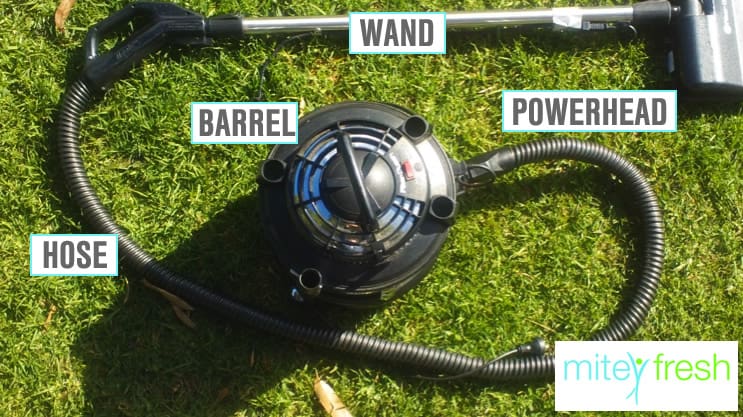
If you don’t hire a professional cleaner, you will need to vacuum the space yourself – and if you have a major issue in your air like mould – a normal vacuum cleaner will not vacuum up mould out of your air effectively.
Have no fear! If you don’t know how to set up a vacuum cleaner, I put labels here. All you need is your vacuum hose, that attaches to a wand and a vacuum power head.
Why Vacuum?
If you don’ have a professional cleaner, or having air issues, you need to learn why vacuum rather than forget about it with this easy-to-follow video.
Washing
This is an important task that many people seem to prioritise less. Pollutants, chemicals, dead skin cells, sweat and odours not only live in your everyday clothing, but also on the sheets, pillows, doonas and mattresses you are sleeping in. In fact, dust mites LOVE growing in bedding, in dark, humid spaces.
You should wash the bedding in hot water, air mattresses and pillows at least once a week. Wash pillows in hot water and vacuum and turn mattresses at least once every three months.

Ventilating will dry the air and slow down dust mite activity and unmade beds make it easier to dry out, to stop dust mites getting a drink.
All you need is your windows WIDE open, curtains open and natural sunlight streaming in. Just like mum and grandma did before you, hang bedding outside in the sunlight, give them a good whack to get out dust if you can’t wash them. Make sure you do this between 10 am and 3 pm when the sunlight is at its brightest and hottest.
If you don’t vacuum your mattress or clean your pillow or doona, you will need to cover the bedding yourself – and if you have a major issue in your air like dust mites – normal sheets will not stop dust mites in your bedding effectively.
Have no fear! If you don’t know how to set up dust mite free bedroom, I made a video. All you need is your mattress cover, a pillow cover, and a doona cover.
Anti-Dust Mite Covers
They work with the help of specifically tiny pore sizes in material, smaller than what dust mites can crawl through. The material covers the mattress, or pillow, or doona, the pores sizes are so tiny even the dust mite poo is sealed in. Standard bedding is a contributor to poor indoor quality. Typically has large gaping, inconsistent pore size. They are usually bleached and dyed, creating a waft of chemicals off-gassing.
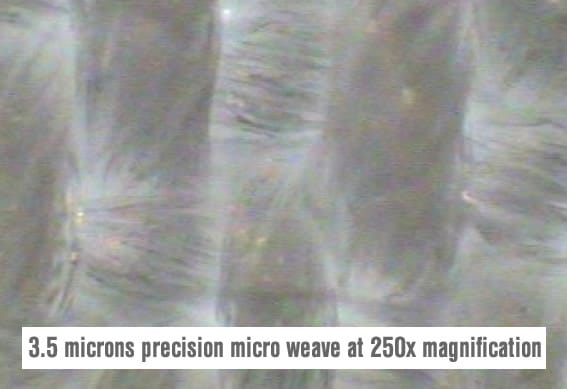
If you don’t vacuum your mattress or clean your pillow or doona, you will need to cover the bedding yourself – and if you have a major issue in your air like dust mites – normal sheets will not stop dust mites in your bedding effectively.
Have no fear! If you don’t know how to set up dust mite free bedroom, I made a video. All you need is your mattress cover, a pillow cover, and a doona cover.
How to Cover Your Bedding Professionally
If you don’ have a professional cleaner, or having dust mite issues, you need to learn how to choose materials for a room naturally with this easy-to-follow VIDEO tutorial.
Watch the video to learn more:
Mattresses and soft furnishings contain formaldehyde, polyurethane foam and brominated flame retardants together permeate into the air, creating an accumulation of chemicals over many years in your space.
I generally recommend natural, plant and animal derived materials cotton and hemp, wool and silk fabrics for normal bedding because they are breathable and least amount of chemicals. Worst case scenario is you add aromatic washing powders and liquids to the bedding and they soak right through the fabric and linger for several washes, close to your skin whilst you rest – this is no good!
Other Types of Indoor Air Cleaning
Be sure the area around your home is clean or else that debris will end up inside. I recommend sweeping or washing your entry and pathway areas once a week. It’s also wise to keep your exterior air conditioning handling unit intake areas, subfloor and roof cavity vents clean and free of debris so air flow has easy-access to your indoor space without being blocked or contaminated the supply air.
Remember, clean indoor air is a happy space, and clean spaces are more enticing to sleep, live, work and relax in. If you get into the habit of having contaminated indoor air, you can be sure that no one will want to visit or work there, or you’ll be forced to do some last minute spot-cleaning. This causes stress and will lead you to develop these bad habits. So let’s recap:
- Open windows and door daily
- Dust surfaces weekly
- Vacuum your spaces every week
- Wash and dry bedding weekly
- Keep mattresses, pillows and doonas aired in sunlight every season
That’s it! With proper cleaning, circulation, and biology you won’t have any issues and you’ll enjoy living, playing and working a whole lot more
PRODUCT:
Indoor Air Care Planner
Print this handy indoor air care planner and put on your fridge so the whole family can help take care of the indoors this year.
My 3 Cs of indoor air care include circulation, cleaning and comfort. I suggest you read these posts to understand how to keep your indoor air fresh and healthy all day, all year long:
- Basic Indoor Air Biology 101
- The Importance of Indoor Air Circulation
- The Nature of Indoor Air Quality
I added The Nature of Indoor Air Quality because you should know what you’re working with before you get started.
Where To Next?
I believe you should spend less time figuring out what to do (that is my job) and more time breathing easier, living easier, and I also see it’s a big picture that needs mastery.
As a Building Biologist, I acquired knowledge of adverse health effects and recommend effective strategies to reduce occupants’ exposure by eliminating and controlling as many sources of pollutants as possible.
I encourage you to have conversations about Quality Indoor Air and Air Purification, ask questions on the Mitey Fresh Facebook page, other people may well be wondering the same thing, and I will do my best to answer them there. Or please call me directly on the land line 02 9986 3432.
Towards healthier living, Carol Parr ♥
Author
-
We’re glad you’re here. We’re Carol and Tony, founders of one of the longest running Healthy Home Blogs in the world, Mitey Fresh Australia. We’ve been on this journey for the last 25 years and are passionate about helping families sift through health hazards and triggers like allergens, mould, water damage, chemicals and EMFs, to get clarity about what’s toxic and what’s not so they can create a healthy and happy home for their family they love. Each month, people visit this blog seeking focus on the health and wellbeing of their loved ones, sustainable and effective practice tips and guides, to help create and manage healthier indoor spaces, improve the built environment that is pleasing to the senses and support healthy living and nature, every day. Starting this blog was to help change people’s lives, one family at a time, and we can’t wait to share how its allowed us to stand next to you and show you how interpreting these synergies between buildings and the environment they are built in will impact upon the health and well-being of those who occupy them. Find out more about Healthy Homes and what this blog can do for you!

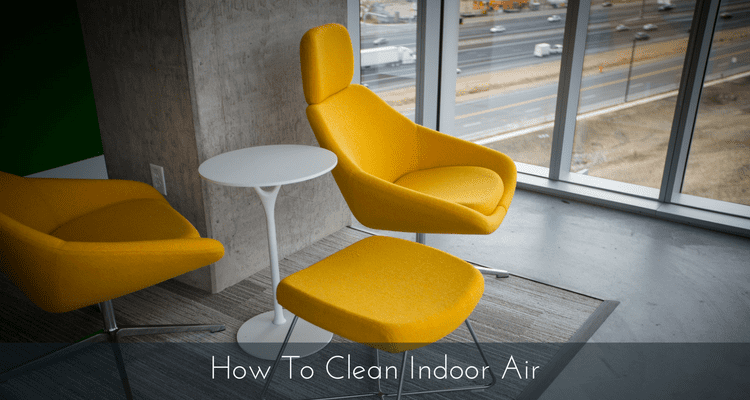
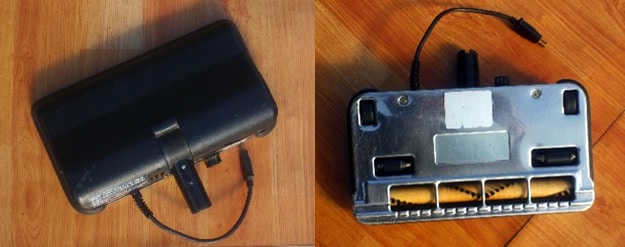
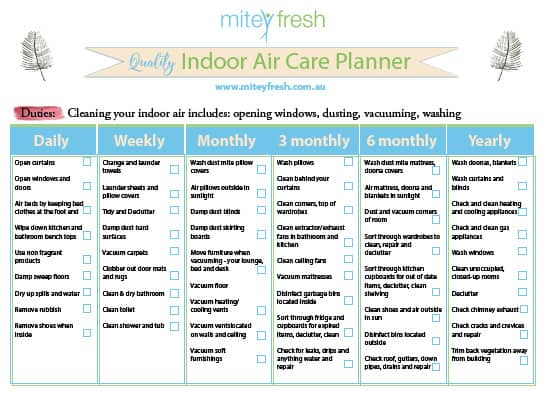




Great tips, thanks. My husband is asthmatic, so I am always looking for ways to support his health.
You are welcome Rebecca. Maintaining quality indoor air supports your health, mind, body and spirit.
Appreciation to my father who shared with me
concerning this webpage, this website is really amazing.
As much as I love a clean home, I find obstacles towards maintaining this.
Once, while flipping through a book from the library, on science, and the effects
of supersonic – or – subsonic energy, that keeps a home free from dust, as a side-effect
of lasering, in physics.
Unfortunately, I did not follow up on this noteworthy lead, and have been relegated to
mannual hard labour. There is hope, however, when I read the article, by you, regarding
“static duster” – a move in the right direction – and, if you have these available, in the meantime,
I would appreciate a replacement, having lost this irreplaceable item to ‘wet conditions.’
It would, also, be great if dusting can be solved, and dissolved permanently.
Thank you Grace for stopping by and sharing your experiences. Sounds like you’re saying that whatever we do, dust just keeps coming back, right? I asked my high school biology teacher Mrs S. on behalf of my mum many moons ago. Teach said, “it just is, dust keeps coming back, and whatever we do to keep free from it, at a cost to our time and health, we turn around and there it is again.” The world is a dusty place and there is no way we can keep on top of it apart from managing it with effective tools and practices.